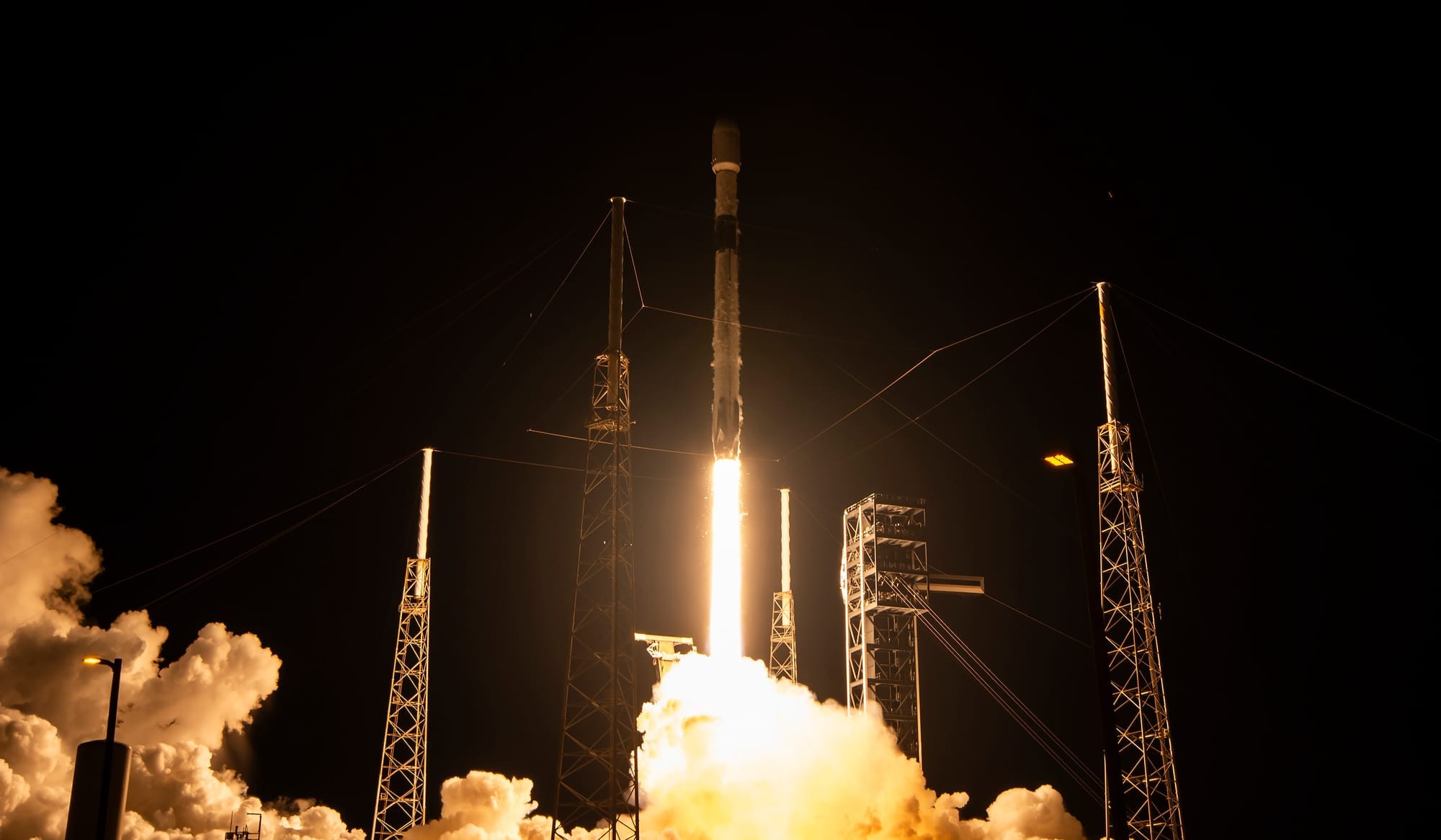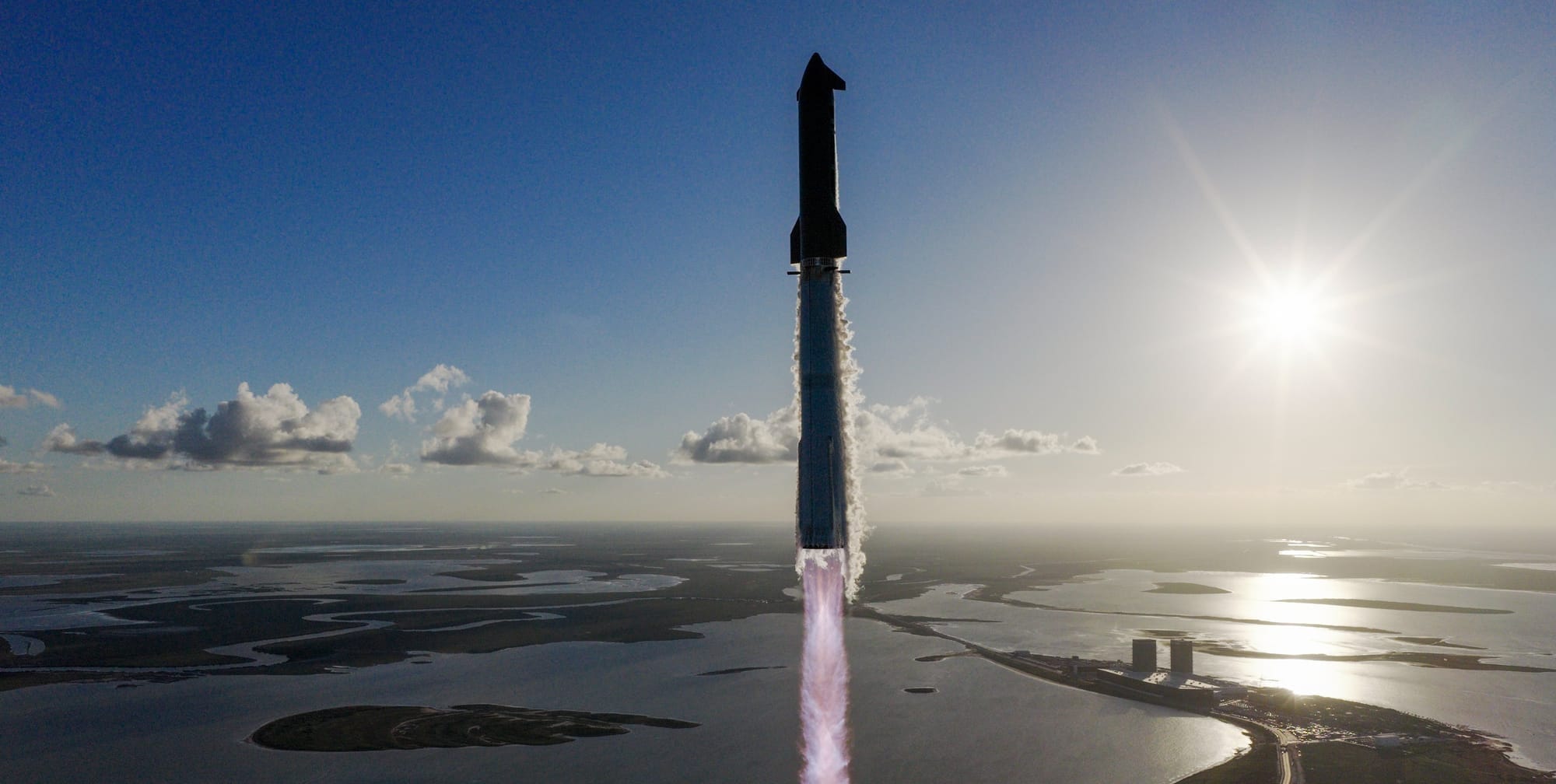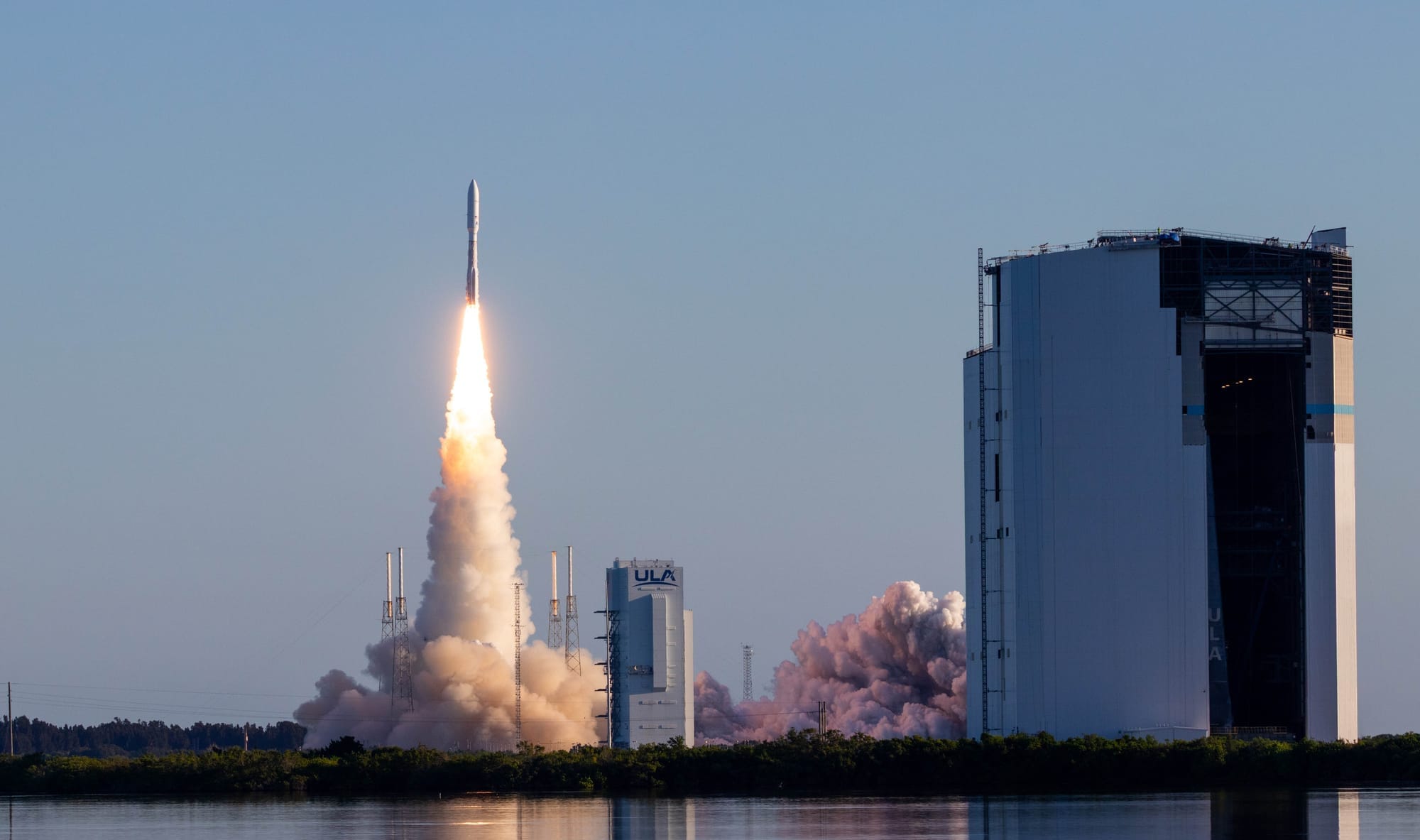Table of Contents
Europe's Ariane 6 departed French Guiana at 00:37 am Universal Coordinated Time on August 13th, carrying a weather satellite into sun-synchronous orbit.
Under the power of a single Vulcain 2.1 engine on the first-stage and two large solid rocket boosters, Ariane 6 began its lengthy journey toward its 800-kilometer orbit. Shortly into the flight, the boosters were dropped approximately 2 minutes and fifteen seconds after igniting, followed quickly by the payload fairing three and a half minutes after liftoff. The sole Vulcain 2.1 engine powered on for a while longer, ending its job almost eight minutes into flight to allow the second-stage to separate and ignite its Vinci engine. To end its first burn, the Vinci engine shut down twenty minutes into flight, before igniting just over thirty minutes later to enter its payload's desired orbit.
Heading to space atop of Ariane 6 today was the first of six MetOp-SG (Meteorological Operational Satellite - Second Generation) satellites from EUMETSAT, with Sentinel-5A integrated into it. MetOp-SG-A1 is designed to improve the accuracy of European weather forecasts through its instrument suite, consisting of: an infrared atmospheric sounder, a microwave sounder, a multispectral imaging radiometer, a novel multiviewing, multichannel, multipolarisation imager, a radio occultation sounder, and Sentinel-5A's spectrometer.
MetOp-SG-A1 arrived at the Guiana Space Center in June, completed propellant loading in July, and was encapsulated inside Ariane 6's fairing a week ago.
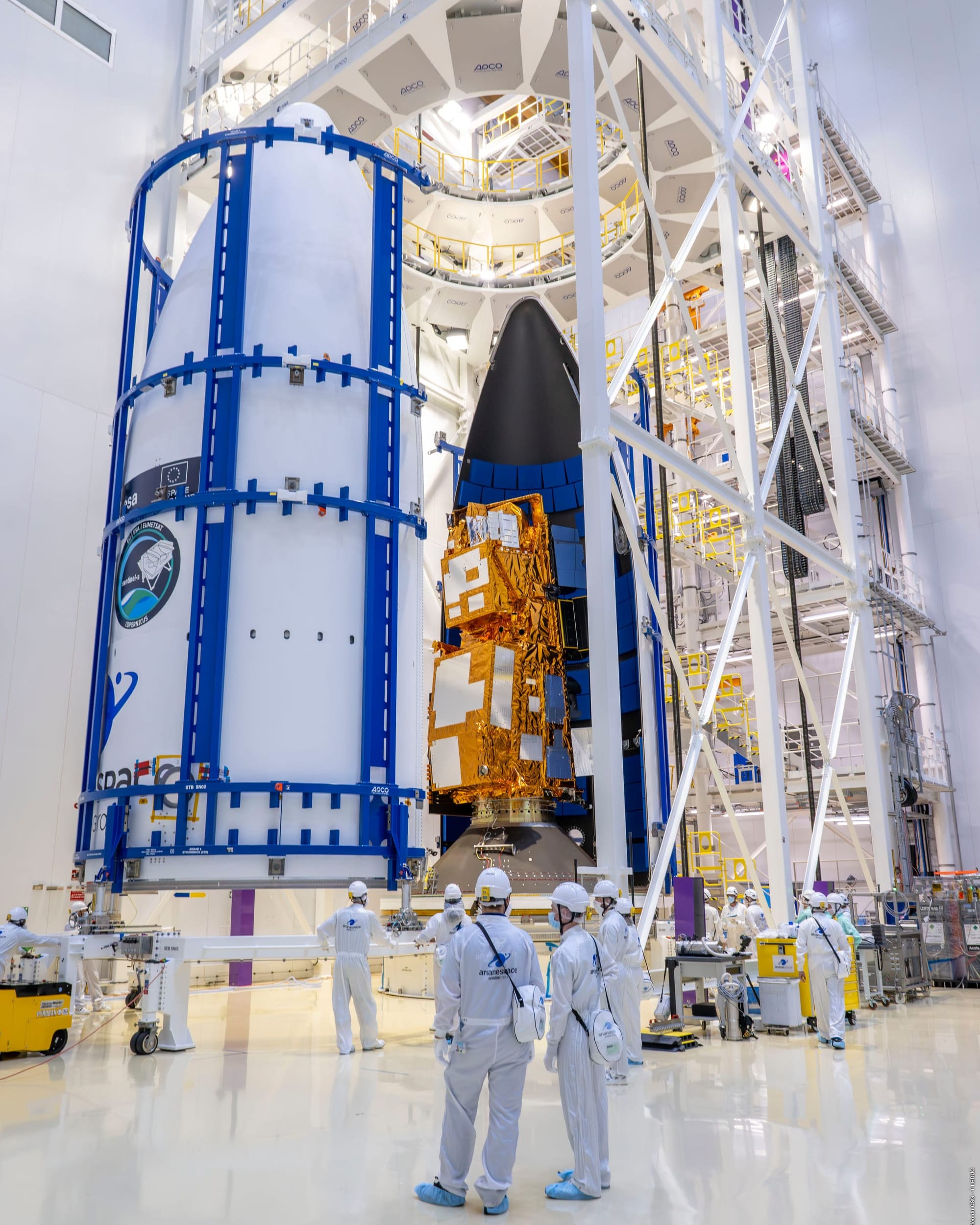
Following the separation of MetOp-SG-A1, Phil Evans, Director-General of EUMETSAT, underscored the importance of it and the upcoming satellite fleet by stating:
"[This] is a–not just a launch–it's a huge leap forward for the meteorological world with the launch of the satellite, a satellite that, as we heard, is full of innovations that will have a concrete impact on our societies and the people who live in it. It will help protect people's lives, it will protect livelihoods, it's such a significant event." – "For us at EUMETSAT, this is a start of a new chapter–a new chapter that will benefit societis in Europe and around the world."
Rüdiger Hartwich from Airbus, the spacecraft's manufacturer, added to the importance of today's launch:
"It's more than a ten-year journey on Earth to develop, design, and build a spacecraft. And now, thanks to the fantastic job of Arianespace, we are in orbit." – "Next year we will have [MetOp-SG-B1], the sister satellite, following, which will be another tremendous effort."
Further launches of Ariane 6 are expected to occur later this year, with almost thirty missions in the rocket's backlog over the coming years. Launches later this year will be for government and institutional customers, as well as Amazon, which plans to utilize the Ariane 64 configuration for the first time with its Kuiper constellation.
What is Ariane 6?
Ariane 6 is ArianeGroup's latest launch vehicle in the Ariane family of rockets. ArianeGroup has been manufacturing and marketing the Ariane launch vehicles on behalf of the European Space Agency since Ariane 4. Two versions of the Ariane 6 rocket are available, Ariane 62 and Ariane 64.
These two versions share the first and second stages. The first stage of Ariane 6 burns liquid hydrogen and liquid oxygen in a single Vulcain 2.1 engine, producing 139 tons of thrust. The second stage of Ariane 6 also burns liquid hydrogen and oxygen, but in a single Vinci engine that generates 18 tons of thrust.
Each of the solid rocket boosters burns a mixture of aluminum and hydroxyl-terminated polybutadiene to produce 474 tons of thrust each. This allows Ariane 62 to generate 1088 tons of thrust at liftoff, while Ariane 64 can generate 2036 tons of thrust.
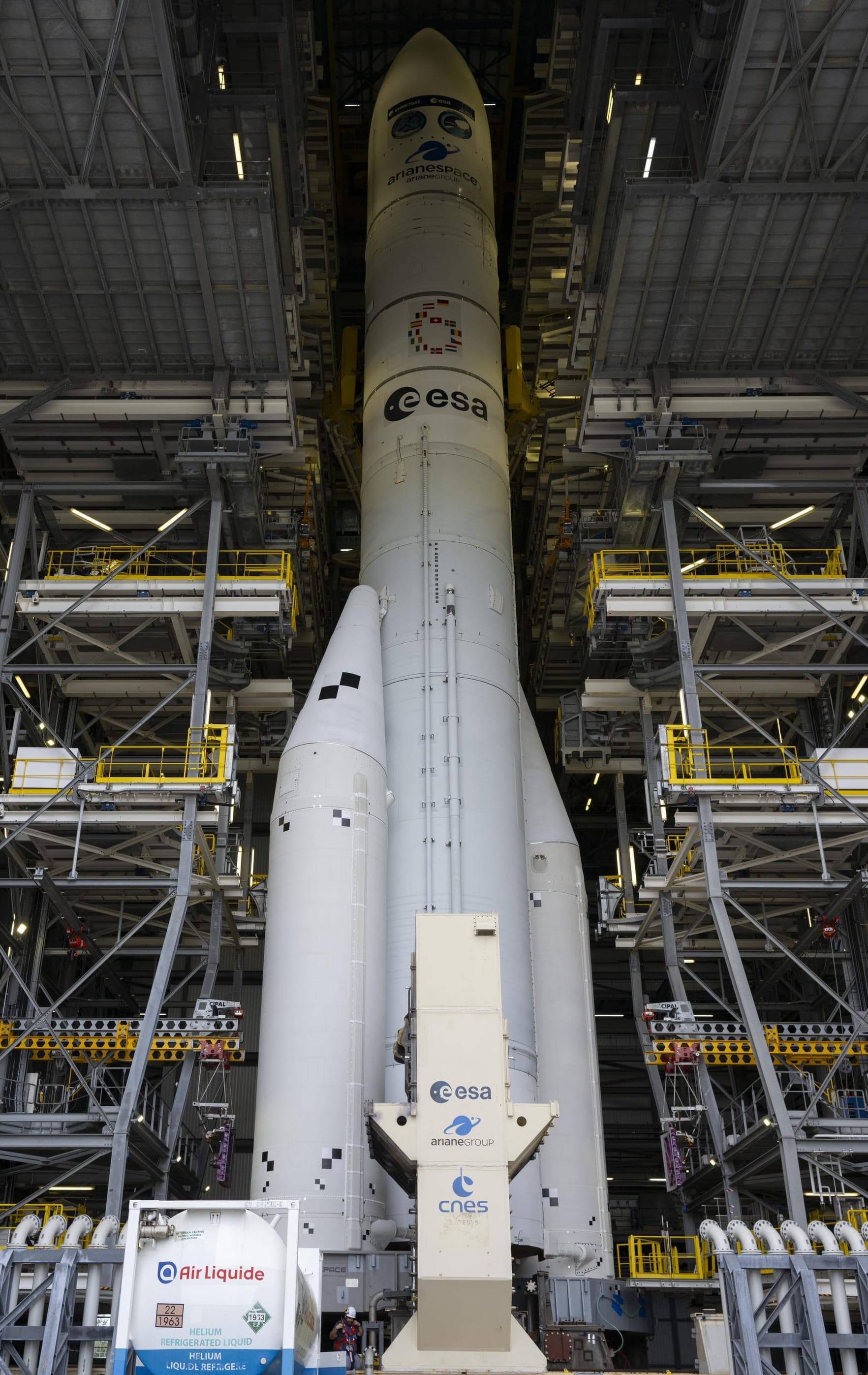
Ariane 62
Ariane 62 is the cheaper of the two configurations because it opts to use two solid rocket boosters. The lift capacity of Ariane 62 is as follows: 10,350 kilograms to low Earth orbit, 7,200 kilograms to a sun-synchronous orbit, 4,500 kilograms to geostationary transfer orbit, or 3,500 kilograms to a lunar transfer orbit.
On the launch pad, Ariane 62 weighs approximately 530,000 kilograms with a first-stage, second-stage, and faring diameter of 5.4 meters. Ariane 62 stands 56 meters tall ahead of launch.
Ariane 64
Ariane 64 is the more capable of the two configurations due to its utilization of four solid rocket boosters. The lift Capacity of Ariane 64 is as follows: 21,650 kilograms to low Earth orbit, 15,500 kilograms to a sun-synchronous orbit, 11,500 kilograms to geostationary transfer orbit, 8,600 kilograms to a lunar transfer orbit, or 5,000 kilograms to geostationary orbit.
On the launch pad, Ariane 62 weighs approximately 860,000 kilograms with a first-stage, second-stage, and faring diameter of 5.4 meters, exactly the same as Ariane 62. Ariane 64 is eight meters taller than Ariane 62 and is 62 meters tall ahead of launch.



